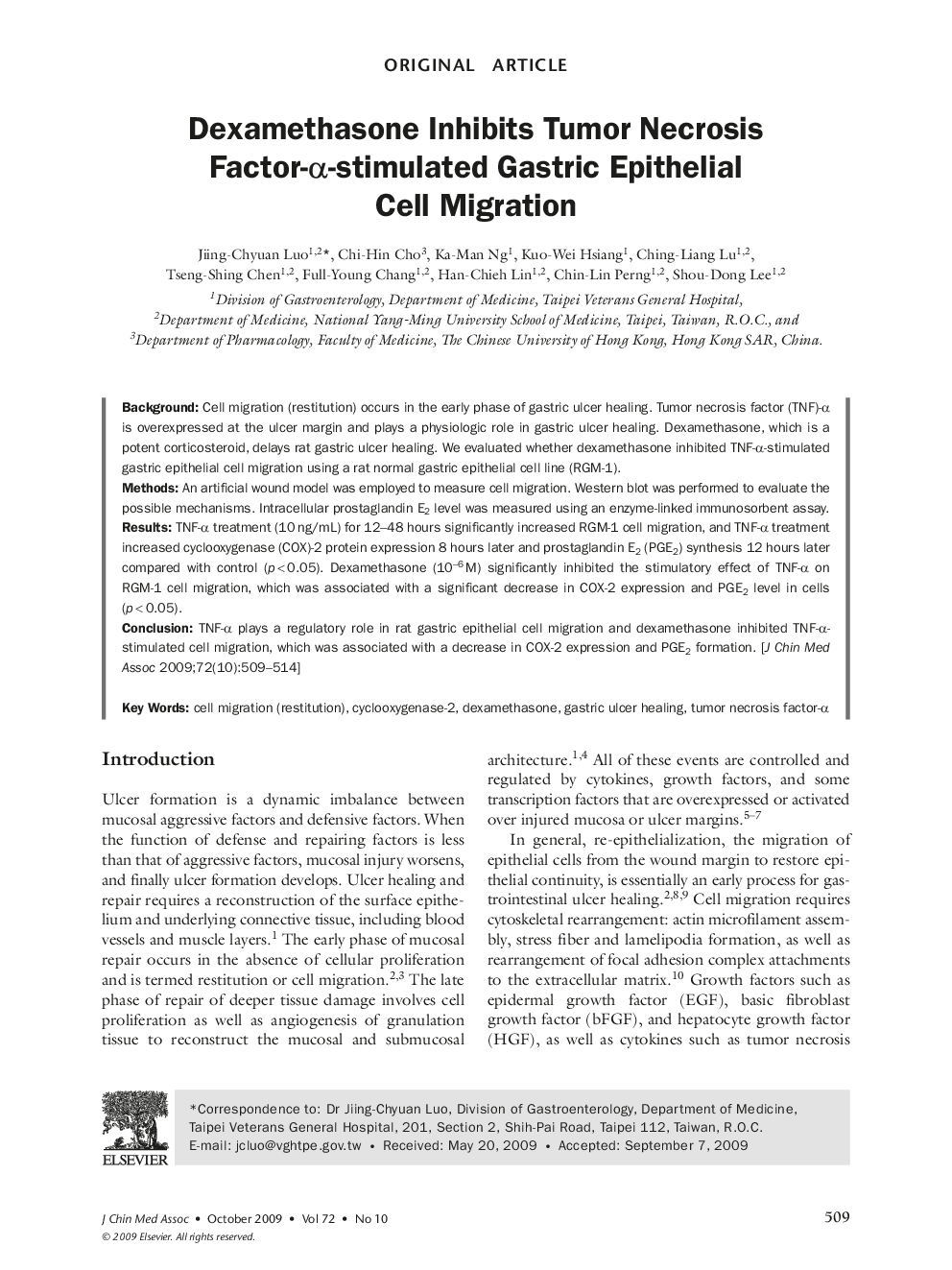| Article ID | Journal | Published Year | Pages | File Type |
|---|---|---|---|---|
| 3476757 | Journal of the Chinese Medical Association | 2009 | 6 Pages |
BackgroundCell migration (restitution) occurs in the early phase of gastric ulcer healing. Tumor necrosis factor (TNF)-αis overexpressed at the ulcer margin and plays a physiologic role in gastric ulcer healing. Dexamethasone, which is a potent corticosteroid, delays rat gastric ulcer healing. We evaluated whether dexamethasone inhibited TNF-α-stimulated gastric epithelial cell migration using a rat normal gastric epithelial cell line (RGM-1).MethodsAn artificial wound model was employed to measure cell migration. Western blot was performed to evaluate the possible mechanisms. Intracellular prostaglandin E2 level was measured using an enzyme-linked immunosorbent assay.ResultsTNF-α treatment (10 ng/mL) for 12–48 hours significantly increased RGM-1 cell migration, and TNF-α treatment increased cyclooxygenase (COX)-2 protein expression 8 hours later and prostaglandin E2 (PGE2) synthesis 12 hours later compared with control (p < 0.05). Dexamethasone (10−6 M) significantly inhibited the stimulatory effect of TNF-α on RGM-1 cell migration, which was associated with a significant decrease in COX-2 expression and PGE2 level in cells (p < 0.05).ConclusionTNF-α plays a regulatory role in rat gastric epithelial cell migration and dexamethasone inhibited TNF-α-stimulated cell migration, which was associated with a decrease in COX-2 expression and PGE2 formation. [J Chin Med Assoc 2009;72(10):509–514]
